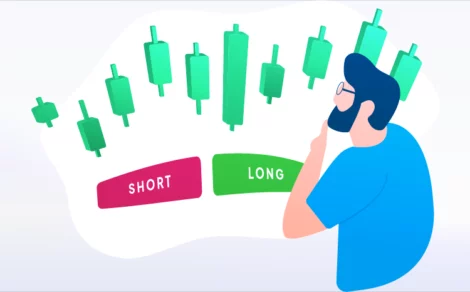If you are a beginner, the best low-risk option trading strategies include iron condor, covered call, long put, short put, and married put.
Toruscope » Online Trading » Options Trading Strategies for Beginners: Maximising Profits With Low Risk
Options Trading Strategies for Beginners: Maximising Profits With Low Risk
By: torus
- 15.Apr.2025
-
0(0)
- 348
Options trading is one of the most efficient ways to accumulate wealth over the long term and is considered the best investment strategy if implemented correctly. With options trading strategies, the contracts allow investors to buy or sell underlying instruments at a set price before the contract expires without making the same an obligation.
It is quite a risky technique for investors, irrespective of their level of experience. So, selecting the right strategies is vital to help investors take advantage of the flexibility and power that stock options can provide. This article details the top option-trading strategies to help you understand how to minimise risks while maximising returns. Stay tuned to learn more!
What is Options Trading?
An option is a financial contract that gives investors or traders the right to buy or sell the financial product at an agreed-upon price for a specific period. They are available for many asset classes such as stocks, bonds, commodities, and indexes. Similar to other financial products, options can be bought with brokerage investment accounts.
Options are a type of derivative, which derives its value from the underlying asset. Options trading might seem overwhelming at the initial stages, but you get clarity with every trade you make. This type of derivatives trading requires a thorough understanding of the options market. If option strategies are used prudently, investors benefit because of the flexibility and power that the stock options can provide.
Option Trading Strategies for Beginners
Whether you are a beginner or have some level of experience, following the listed strategies for options trading will help you understand how they work. Following these, you become more adaptable to the frequently changing market conditions.
-
Covered Call
Besides simply buying call options, you can go for a covered call, which is also known as a buy-write transaction. To make it work, you need to buy the underlying stock as usual and write or sell a call option for the same shares. It is considered the most popular strategy because it generates income and minimises the risk of being long on the stock alone.
Most investors use this approach frequently to produce income by selling the call premium or to protect against a potential decline in the underlying stock’s value. This approach works when you have a short-term position in the stock and a neutral opinion on its direction. You must be willing to sell your shares at the short strike price to minimise the risk and get the rewards.
-
Iron Condors
Iron condor is a strategy designed to generate returns from low volatility. The investor holds both a bull put spread and a bear call spread. The iron condor is set up by following a series of steps:
- Buying one OTM put with the strike price being lower than the current price of the asset,
- Selling one OTM put with a strike price around the current price of the underlying asset,
- Selling one OTM call with a strike price above the current price of the underlying asset,
- Purchasing one OTM call of a higher strike, marking a price even above your previous strike price, causing a bear call spread.
Further, there is the same expiry date for all the options, with the same underlying asset. Generally, the put and call sides have equal width. With this strategy, you can earn a net premium on the structure. Typically, this approach works best during times of low volatility when investors do not expect big price moves in the underlying stock. Also, high income generates within the range of the strike prices for the options sold.
-
Long Put
Long put means buying a put option, expecting the value of the underlying asset to decline. In this strategy, long is not a term associated with the contract span, but with the action of a trader buying the option with the plan of selling it at a higher price later on at some point of time.
In addition, you can buy a put for speculative reasons, predicting that the underlying asset will eventually fall, which increases the value of the long put option. It is also used to hedge a long position in the underlying asset. The decline in the underlying asset leads to an increase in the value of the put option, helping to offset the loss in the underlying asset.
-
Short Put
A short put is an option trading strategy where you sell a put option on a security. It is also called selling a put option, a naked put, or an uncovered put. When you sell a put option, you are said to short the put. The goal of using a short put approach is to profit from an increase in the stock’s price by getting the premium linked with the sale in a short put.
In other words, if you write a put option, you will be obligated to buy shares of the underlying stocks if the put option buyer exercises the option. A short put holder may face a significant loss if the price of the underlying asset falls below the strike price of the short put option at the time the options contract expires.
-
Married Put
Married put option trading strategy refers to purchasing shares of stocks and also buying put options at the same time for the same number of shares. Being a holder of the put option, you have the right to sell stock at the strike price with each contract worth 100 shares.
Moreover, the married put approach is used as an insurance policy to establish a price floor if the stock’s price falls drastically. It is also called a protective put, as the strategy can sometimes be used for purchasing a put option while holding shares from a previous purchase.
In addition, this strategy is used to protect against downside risk when holding a stock. Here, losses are limited, but if the value of the stock does not fall, the investors tend to lose the fund they pay as a premium for the put option.
Bottom Line
Options trading can be overwhelming for beginners. However, by using options trading strategies, you can minimise the risk and maximise the returns. In this blog, the most significant strategies have been mentioned to help you understand the concept clearly. Even if you are a risk-averse individual, you can use these approaches to enhance your overall returns.
If you’re looking for personalised guidance on options trading, connect with the experts at Torus Digital for tailored insights and smarter decisions with our Best Trading Account App.
Frequently Asked Questions
You can start trading in options by putting in less than two lakh rupees. However, it is vital to trade carefully to minimise risk and maximise results.
The straddle options trading strategy is considered the best for the Indian market. A long straddle is a market-neutral trading strategy to use in this volatile market.
Initially, invest small, not more than what you can afford. Options trading risk management also involves diversifying your portfolio to manage your capital better. Remember, risk management is the key to success in options trading.
Related Reads
What is Slippage in Trading? Meaning, Causes & Impact Explained
In trading, timing and precision often define success. However, even when a trader believes...
By: torus
- 7 mins
- 01.Jul.2025
- 4(1)
- 97
What is an Option Contract?
Imagine having the flexibility to buy or sell shares at a fixed price, no...
By: torus
- 7 mins
- 01.Jul.2025
- 0(0)
- 43
Types of Financial Instruments You Should Know Before Investing
Before investing funds in any market, it is essential to understand what financial instruments...
By: torus
- 7 mins
- 01.Jul.2025
- 0(0)
- 39
What are Contracts for Difference (CFD)?
Contracts for Difference, commonly known as CFDs, are financial instruments that allow traders to...
By: torus
- 9 mins
- 01.Jul.2025
- 0(0)
- 39
Difference between Short Position & Long Position
Understanding the concepts of short and long positions is essential for anyone interested in...
By: torus
- 8 mins
- 01.Jul.2025
- 0(0)
- 38
Essential Trading Terminologies You Need to Know
Trading in financial markets opens a world full of opportunities. For many first-time investors,...
By: torus
- 8 mins
- 01.Jul.2025
- 0(0)
- 47
Disclaimer: The content provided in this blog is for informational purposes only and does not constitute financial advice or recommendations. The content may be subject to change and revision. Readers are encouraged to conduct their own research and consult with a qualified financial advisor before making any investment decisions. Torus Digital and its affiliates takes no guarantees whatsoever as to its completeness, correctness or accuracy since these details may be acquired from third party and we will not be responsible for any direct or indirect losses or liabilities incurred from actions taken based on the information provided herein. For more details, please visit www.torusdigital.com.
Tenneco Clean Air IPO Listing: Strong Market Debut with 27% Premium
Tenneco Clean Air India Ltd made a confident entrance into the public markets on...
By: torus
- 5 mins
- 19.Nov.2025
-
3.7(6)
-
348
Stock to Buy Today: November 19, 2025
The Indian stock market witnessed a mild decline on November 18, 2025, ending a...
By: torus
- 4 mins
- 19.Nov.2025
-
4.3(3)
-
348
Mirae Asset Infrastructure Fund NFO: A Sector-Focused Bet on India’s Growth
Mirae Asset Mutual Fund has launched a new equity scheme — Mirae Asset Infrastructure...
By: torus
- 4 mins
- 18.Nov.2025
-
4.3(6)
-
348
Emmvee Photovoltaic IPO: Shares Make Muted Market Debut, List Flat At ₹217
Emmvee Photovoltaic Power made a muted debut on 18 November 2025, listing flat at...
By: torus
- 3 mins
- 18.Nov.2025
-
3.7(6)
-
348








